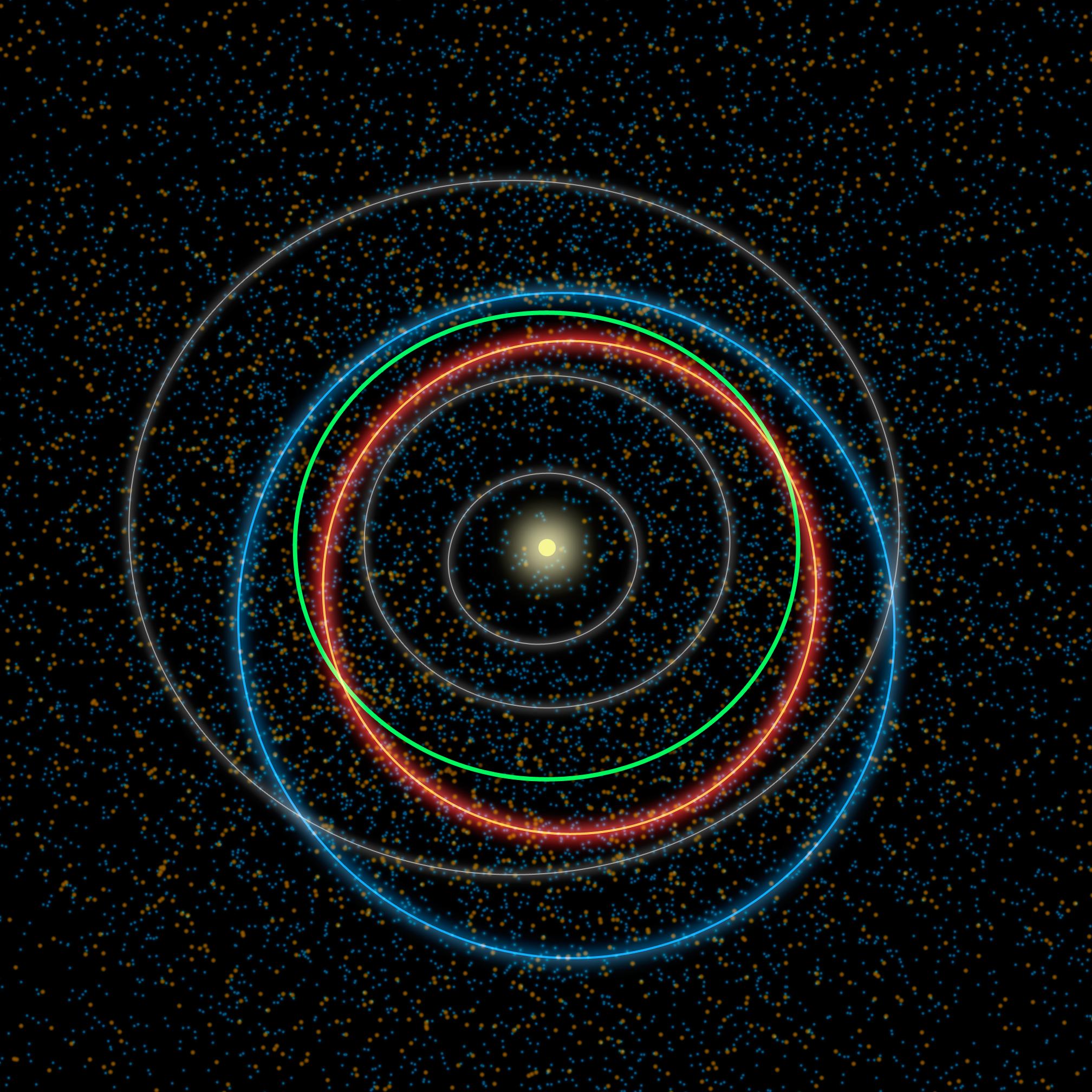Generating an Ephemeris for Asteroids
Moving from “What’s Observable” to “Horizons”
By following the directions in Asteroid Series 2, a list of possible targets was generated for your viewing session. Now you need an accurate ephemeris; “What’s Observable” delivers a list of objects, their locations, rise/set times, and other information, as well as this warning:

All this warning really says is that, for various complex reasons, you should go to the HORIZONS website to make sure that you’re pointing your telescope in the right place at the right time. The previous document gave you the link, or you may go to HORIZONS directly at http://ssd.jpl.nasa.gov/horizons.cgi
If you are entering the HORIZONS web page from What’s Observable, the information of the object you were investigating loads automatically, along with any preferences you have set in the past. Let’s investigate a few of them now.

Change Time Span
- Click the change link on the Time Span line.
- Choose a present time span or enter your own start and stop times.
- “Step size” reports the coordinates for your object in increasingly smaller units. Choose the level of positional detail you want to see.
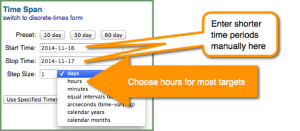
Change Table Settings
Although there are a lot of data that you could choose to have returned, start with the following list so that you have less to sort through. An explanation of each appears below the ephemeris after you submit the query.
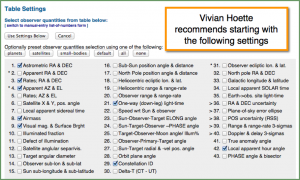
Optional Observer Settings
This section appears below the Table Setting checkboxes. Most of the default settings work well. There are a few we recommend you check:
- Setting an air mass limit of two is one way to insure that you will have good viewing for your session. It refers to the amount of atmosphere between you and your target in relationship to zenith (1).
- Elevation cutoff limits how low your telescope will point.
- Hour angle cutoff defines how far east or west of the meridian you are willing to image. As objects arc across the skty during the night, they cross their highest point at the meridian. The closer your target is to the meridian, the less atomosphere you are looking through.
- Skip daylight is a logical choice unless you are really interested in knowing more about where the object is during the day.
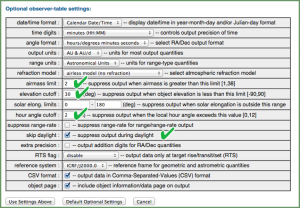
Display/Output Setting
The default setting for output is HTML. If you want to download the ephemeris, you may want to change to plain text or download/save.
Generate the Ephemeris
There are several sections to the ephemeris page. Record the record number of your object to use when making image requests. This number is only necessary in cases where the object is very new or has a two-part name. It is found at the top of the Object Data Page.
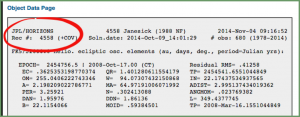
The column headers for the ephemeris table are listed at the top of the ephemeris. Depending upon the browser, the names may not line up exactly with the data. You will need to remember the order in which they are listed as you scan across.

The RA and Dec coordinates can now be used to request an image from any telescope.
